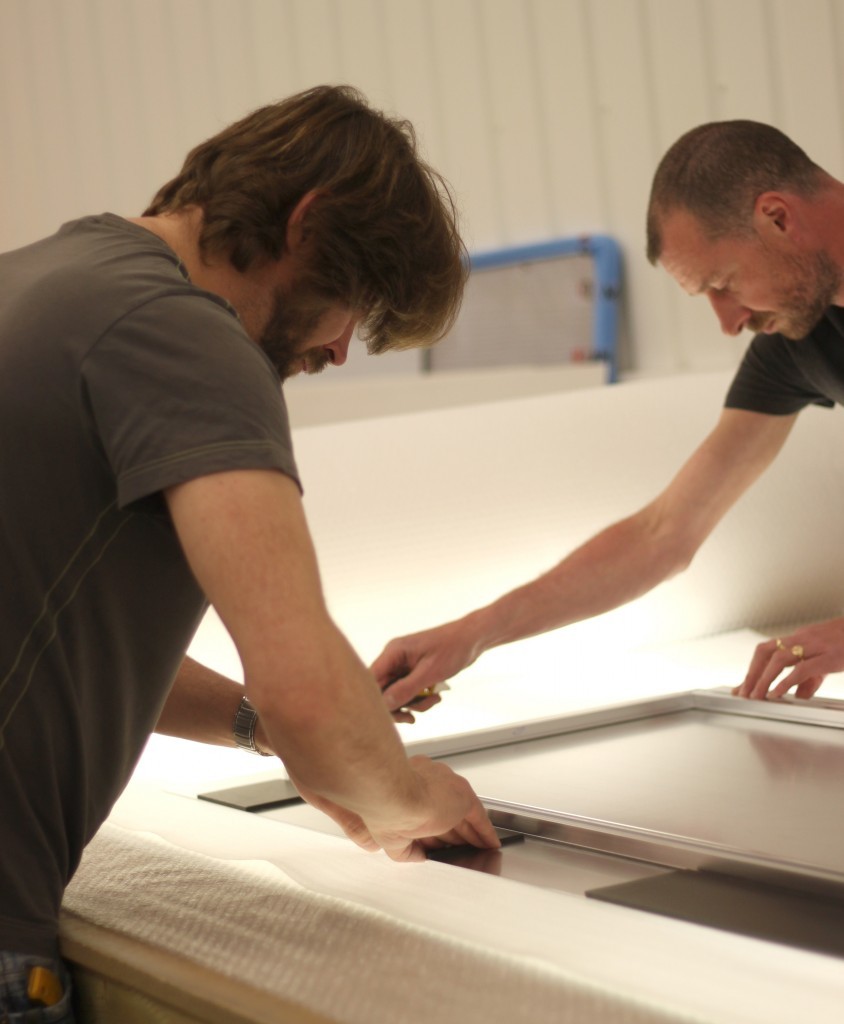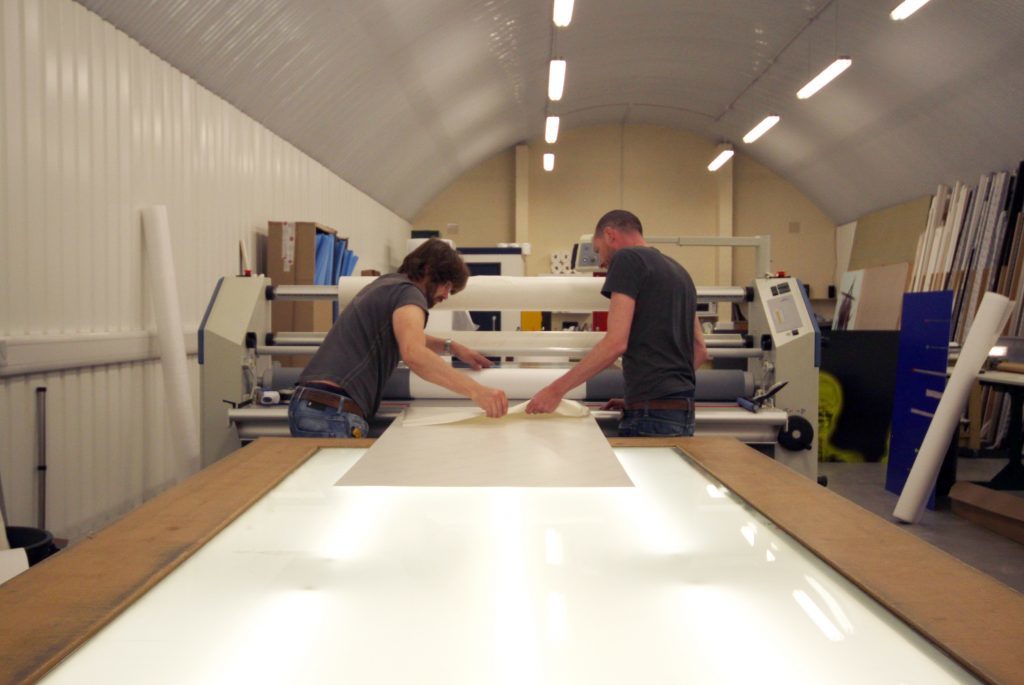Pressure-Sensitive Mounting vs. Dry Mounting vs. Gel Mounting
There are multiple ways of mounting your prints to best suit your needs, and it is imperative to consider how your prints are finished to best fit their purpose.
It is important to consider though that Collectors generally prefer not to mount single prints, as the process is not reversible. We do not always recommend mounting for original artworks or editions signed and numbered on the reverse side; for these, we would normally suggest a Hinged Window Mount. Since mounted prints are very hard to remove, they are not fully archival. This method is useful when mounting inexpensive artwork likely to be replaced.
However, when selling framed artworks and print editions, mounting can be important in order to get the best results, especially when producing exhibitions. Some methods have more longevity than others, this when the variations in mounting methods become key:

Dry Mounting
- Mostly used for posters, and rarely used with fine art, given that the heat press method can damage paintings.
- There are limits to the sizes that can be dry mounted.
- At Metro, we would always use Pressure-Sensitive Mounting for producing the same effect, but without the risk of heat damage.
Pressure-Sensitive Mounting
- Pressure-Sensitive Mounting is similar in nature to Dry Mounting, however, it benefits from not requiring heat, which can potentially damage your work. Instead, pressure-sensitive sheet adhesives are used that only activate once put through a Roller Press.
- At Metro, our expert Mounters use PH neutral adhesives only, which provide optimum longevity.
- Pressure-Sensitive Mounting can be used on a range of substrates, from Kapa Mount to Dibond, up to a size of 120×72” (depending on the material)
Gel/Wet Mounting
- Gel Mounting is most commonly used when Reverse Mounting a print to Perspex, and therefore usually chosen for its aesthetic.
- This method requires a gel adhesive, activated with a catalyst that is then also put through rollers in order to secure the mount and remove excess gel.
- A Gel Mount is freshly prepared, while a dry mount is pre-prepared and sealed.
- Gel Mounting is less archival and can only be used with specific papers.

